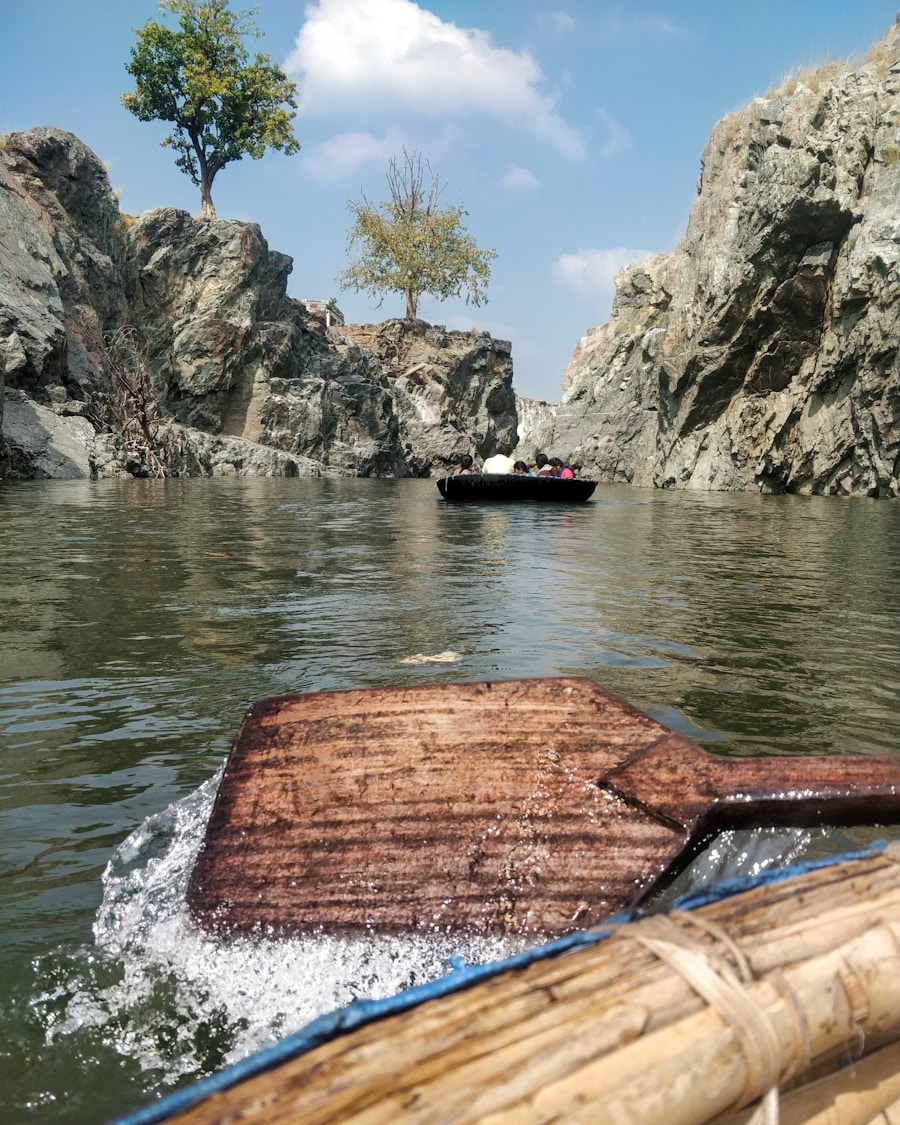Download links
How to install The Ultimate Guide to Online Fishing APK?
1. Tap the downloaded The Ultimate Guide to Online Fishing APK file.
2. Touch install.
3. Follow the steps on the screen.
Description
Selecting an ideal fishing spot is a critical first step that can significantly influence the success of your fishing expedition. The location you choose can determine not only the quantity of fish you catch but also the variety of species available. Freshwater and saltwater environments offer distinct opportunities, each with its own set of characteristics.
For instance, lakes and rivers are often teeming with species like bass, trout, and catfish, while coastal areas and estuaries may yield flounder, snapper, and various types of tuna. Understanding the habitat preferences of different fish species is essential; for example, bass tend to favor structures such as submerged rocks or fallen trees, while trout are often found in cooler, flowing waters. Seasonality also plays a crucial role in determining the best fishing spots.
During spring and fall, many fish species are more active and can be found in shallower waters as they spawn or feed. Conversely, during the heat of summer, fish may retreat to deeper, cooler areas. Tides are another factor to consider when fishing in saltwater; many species are more active during specific tidal phases.
Observing local fishing reports and talking to experienced anglers can provide valuable insights into where to cast your line at any given time of year.
Key Takeaways
- Look for signs of fish activity such as jumping or feeding when choosing a fishing spot
- Consider the type of fish you want to catch and the appropriate gear for that specific species
- Learn basic fishing techniques such as casting, reeling, and setting the hook
- Utilize online resources such as fishing forums and social media groups for tips and advice
- Practice proper handling and release techniques to ensure the fish’s survival after catching it
Selecting the Best Fishing Gear
Rod and Reel Selection
For instance, if you are targeting larger species like pike or musky, a heavy-duty rod with a strong reel is essential to handle the fight these fish can put up. Conversely, if you are fishing for panfish or trout, a lighter rod with a sensitive tip will enhance your ability to detect bites.
Fishing Line Options
Line selection is equally important; different types of fishing lines—monofilament, fluorocarbon, and braided—offer unique advantages. Monofilament is versatile and easy to handle, making it a good choice for beginners. Fluorocarbon is nearly invisible underwater, which can be advantageous in clear waters where fish may be spooked by visible lines. Braided line, on the other hand, offers superior strength and sensitivity, making it ideal for heavy cover or deep-water fishing.
Tackle Selection and Behavior
Additionally, selecting the right tackle—hooks, weights, and lures—can make a significant difference in your success rate. Understanding the behavior of your target species will guide you in choosing the most effective tackle.
Understanding the Basics of Fishing Techniques

Mastering various fishing techniques is essential for any angler looking to improve their skills and increase their catch rate. One fundamental technique is casting, which involves throwing your bait or lure into the water with precision. There are several casting methods, including overhead casting and sidearm casting, each suited for different situations.
Overhead casting is typically used for long-distance casts, while sidearm casting can be more effective in tight spaces or when trying to avoid obstacles. Another important technique is retrieval, which refers to how you bring your lure back to you after casting. Different species respond to different retrieval speeds and patterns; for example, bass may be attracted to a slow, steady retrieve that mimics a wounded baitfish, while pike may prefer a faster retrieve that creates more commotion in the water.
Additionally, understanding how to use various lures—such as jigs, spinners, or topwater baits—can enhance your effectiveness on the water. Each lure has its own action and appeal that can trigger strikes from fish under specific conditions.
Utilizing Online Resources for Fishing Tips and Advice
| Online Resource | Number of Tips/Advice | User Ratings |
|---|---|---|
| Fishing Forums | Over 10,000 threads | 4.5/5 stars |
| YouTube Channels | Hundreds of videos | 4.8/5 stars |
| Fishing Blogs | Dozens of articles | 4.3/5 stars |
| Social Media Groups | Thousands of posts | 4.6/5 stars |
In today’s digital age, anglers have access to a wealth of online resources that can enhance their fishing experience. Websites dedicated to fishing often provide detailed information on local fishing regulations, seasonal patterns, and species-specific tips. Forums and social media groups allow anglers to share their experiences and advice with one another, creating a community of knowledge that can be invaluable for both novice and experienced fishermen alike.
YouTube has become an especially popular platform for learning about fishing techniques and gear. Many experienced anglers share tutorials that cover everything from knot tying to advanced fishing strategies. These visual guides can be particularly helpful for those who learn better through demonstration rather than text.
Additionally, mobile apps designed for anglers can provide real-time weather updates, tide charts, and even GPS mapping of local fishing spots. By leveraging these online resources, anglers can stay informed about the latest trends and techniques in the fishing world.
Learning How to Properly Handle and Release Fish
Proper handling and release techniques are crucial for maintaining healthy fish populations and ensuring sustainable fishing practices. When catching fish that you intend to release, it’s important to minimize stress and injury to the fish. Using barbless hooks can make it easier to remove hooks without causing significant damage.
Additionally, wetting your hands before handling fish helps protect their slime coating, which is vital for their health. When it comes time to release the fish back into the water, doing so gently is key. Avoid holding fish out of water for extended periods; instead, keep them submerged as much as possible while removing hooks or taking photos.
If you need to revive a fish that appears lethargic after being caught, gently moving it back and forth in the water can help circulate oxygen through its gills. This practice not only increases the chances of survival for released fish but also contributes to healthier ecosystems overall.
Connecting with the Online Fishing Community

Connecting with Like-Minded Anglers
Social media platforms like Instagram and Facebook have numerous groups where anglers share their experiences from around the world. These platforms allow you to connect with like-minded individuals who share your passion for fishing, regardless of geographical boundaries.
Valuable Insights from Online Forums
Participating in online forums dedicated to fishing can also be beneficial.
These discussions often include personal anecdotes that can provide valuable insights into what works best in different situations.
Fostering Friendships and Shared Adventures
Additionally, many local fishing clubs have online presences where they organize events and share information about local fisheries. By becoming an active member of these communities, you not only gain access to a wealth of information but also foster friendships that can lead to shared fishing adventures in the future.
FAQs
What is online fishing?
Online fishing, also known as phishing, is a type of cyber attack where attackers use fraudulent emails, websites, and other online platforms to trick individuals into providing sensitive information such as usernames, passwords, and credit card details.
How does online fishing work?
Online fishing typically involves sending deceptive emails or creating fake websites that appear to be from legitimate sources, such as banks, social media platforms, or online retailers. The goal is to trick individuals into clicking on malicious links or providing personal information, which can then be used for fraudulent purposes.
What are the signs of an online fishing attempt?
Signs of an online fishing attempt include receiving unsolicited emails asking for personal information, being directed to unfamiliar websites that request sensitive data, and encountering suspicious pop-up messages or alerts while browsing online.
How can individuals protect themselves from online fishing?
To protect themselves from online fishing, individuals should be cautious of unsolicited emails and messages, verify the legitimacy of websites before entering personal information, and use security measures such as two-factor authentication and anti-phishing software.
What should individuals do if they suspect they have been targeted by online fishing?
If individuals suspect they have been targeted by online fishing, they should avoid clicking on any suspicious links or providing any personal information. They should report the incident to the legitimate organization being impersonated and consider changing their passwords and monitoring their accounts for any unauthorized activity.





